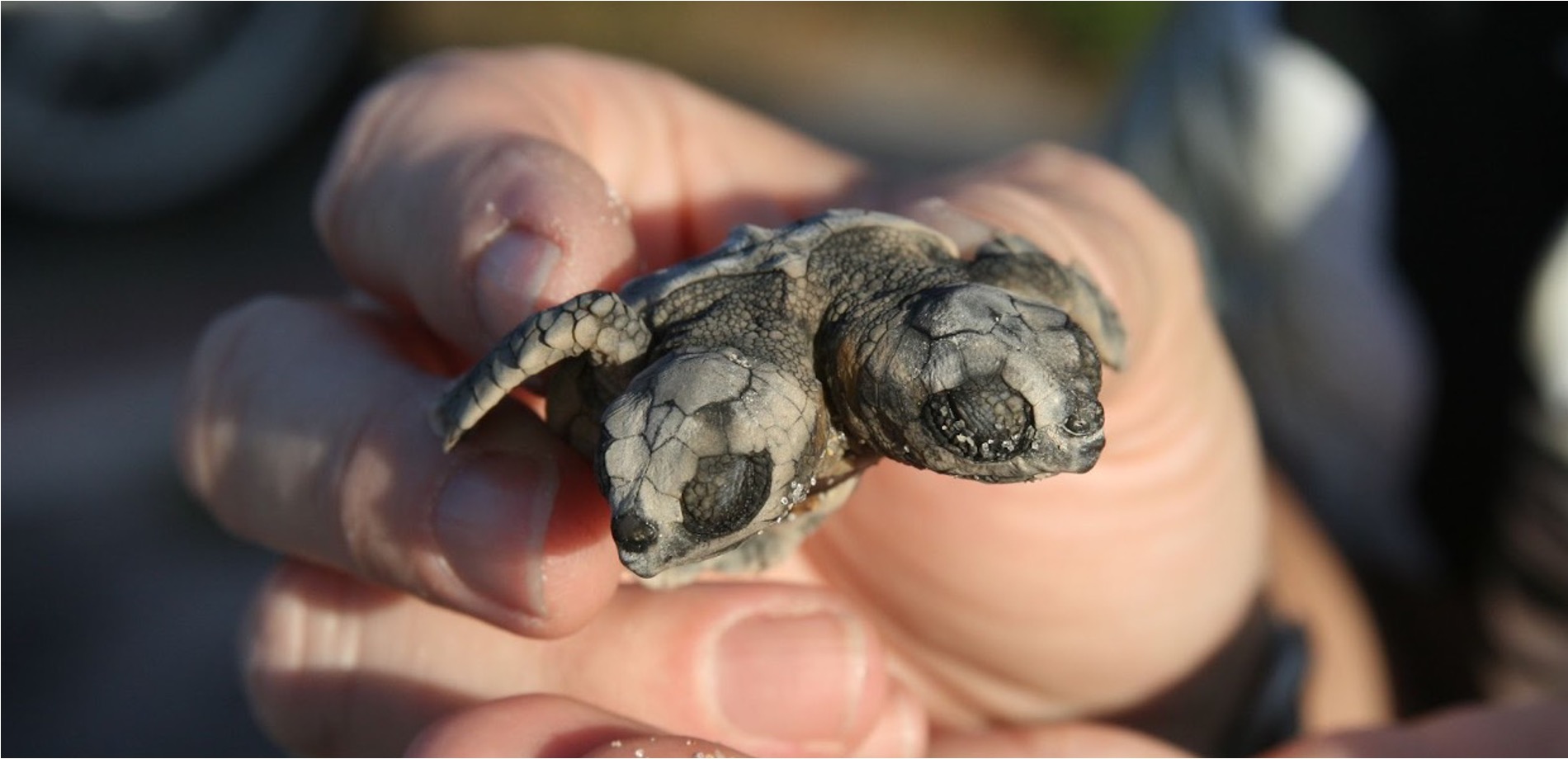
Author: Kristan Reynolds
Date: Octobe 29, 2025
This Halloween, we’re diving into the bone-chilling world of marine skeletons! From two-headed sea turtles to sharks with killer tails, the marine life studied at the Florida Atlantic Marine Science Lab spotlights spooky ongoing research into skeletal systems and anomalies.
Once upon a time, long before scientific understanding of genetics and development patterns, anomalies like two-headed turtles — or any animals with genetic deformities — were seen as bad omens and even referred to as monsters. Sailors and early naturalists sometimes collected and displayed them, where they became legends of their own.
The field of teratology was born with the goal of understanding these abnormalities. Teratology (from the Greek word teras, meaning monster) was the early study of congenital malformations — anomalies present from birth — or in this case, from hatch out. Nowadays, biologists study these defects with the goal of understanding the overall population health of different species.
|
Left to right: a dorsal, ventral, and frontal view of bifacial loggerhead hatchlings (top row) and bicephalic loggerhead hatchlings (bottom 2 rows; modified from Ingle et al., 2021) |
“To understand what’s normal, you have to also understand the range of abnormal,” said Dr. Jeanette Wyneken, a primary investigator at the Marine Science Lab.
Dr. Wyneken and other Florida Atlantic scientists examined how abnormal craniofacial and axial duplication (in this case, extra faces, heads, or vertebrae) affect sea turtle hatchlings on south Florida beaches. Their study focused on two types of anomalies: bifacial turtles, which have two faces on one head, and bicephalic turtles, which have two separate heads.
Dr. Wyneken and coauthors hypothesized that the turtles would have comparatively smaller body dimensions than their normal counterparts. These turtles hatched from a single egg, “so that's one yolk that was split between two animals,” she said. “With this, you would expect them to be smaller because they're sharing a single food source.”
The data obtained by Dr. Wyneken and her research team confirmed that bifacial and bicephalic hatchlings had smaller shells (carapaces) than normal turtles. Additionally, bicephalic turtles showed greater rostral deviation than bifacial ones. This refers to how far the head — or in this case, heads — angle away from the body’s midline. However, both bifacial and bicephalic turtles were surprisingly symmetrical between left and right sides.
|
3D Models of the skulls and vertebrae of bicephalic loggerhead hatchlings |
And in the most extreme cases, duplication didn’t stop at the head — some turtles had duplicated vertebrae and even extra pairs of flippers!
With a tail as long as its body and an unusual hunting style, the common thresher shark is often called an extremist by scientists. It uses its deadly tail like a whip — sneaking up on schools of fish, raising its tail over its head, and slapping that extreme tail at its prey.
The vertebral column of thresher sharks runs all the way to the tip of its tail, and like that of other sharks, is made of cartilage — the same flexible material found in our noses and ears. But in sharks, this cartilage is mineralized, making it as stiff as mammalian bone.
Jamie Knaub is a Ph.D. candidate at Florida Atlantic University studying functional morphology. Knaub is investigating how vertebral shape and microstructure impact movement and function in sharks and cetaceans (whales, dolphins, and porpoises).
To explore vertebral microstructure in thresher sharks, Knaub used a technique called micro-CT scanning, the same technology as a medical CAT scan. The scanner captures thousands of high-resolution X-rays from multiple angles, allowing her to reassemble them in 3D and closely examine the internal architecture of vertebrae from the front (anterior) and back (posterior) of thresher sharks.
“In certain groups of sharks, the vertebral cross-sections look like a bike wheel with plates (known as lamellae) radiating out from the center,” Knaub said. “They’re really quite beautiful!”
Knaub’s scans revealed that adult thresher sharks have more lamellae within their vertebrae compared to juveniles, helping to support their larger bodies and longer tails. She also found that the posterior vertebrae (towards the tail-end of the animal) have more lamellae than the anterior vertebrae (towards the head end), likely increasing stiffness and supporting the tail during whipping behaviors. However, a tail whip requires both strength and flexibility! The posterior vertebrae are compressed (flattened like a pancake) and have smaller gaps between them (dark spaces in the micro-CT image below) than the anterior vertebrae. Those smaller spaces likely increase the flexibility of the posterior vertebral column. Meanwhile, the anterior vertebrae have larger gaps between them (and therefore more space and rigidity) along with more nodes, or splits in the lamellae, that likely provide a stable base to efficiently transfer energy to their massive tail for whipping behaviors.
|
Micro-CT scan of common thresher shark’s anterior vertebrae |
While uncovering the secrets of the thresher shark’s deadly tail, this research also sheds light on structures within our own bodies, like the cartilage in our knees. Understanding how the shark’s tail balances flexibility and strength could inspire new designs in bioengineering and architecture, showing that nature’s most “killer” adaptations might just hold the key to innovative, stronger materials.
As we explore the incredible adaptations and abnormalities of marine life, we’re reminded that there’s always something extraordinary — and sometimes a little spooky — lurking beneath the waves. It’s in that spirit that the researchers at the Florida Atlantic Marine Science Lab wish you a Happy Halloween and encourage you to stay curious, keep exploring, and never stop marveling the adaptations that are so characteristic of oceanic life.